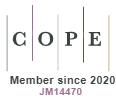Effects of hyperboloid masticator apparatus in temporomandibular disorder - Case Study
DOI:
https://doi.org/10.5585/conssaude.v14n4.5688Keywords:
Physical Therapy Modalities, Facial Pain, Tempormandibular disorder, Temporomandibular joint.Abstract
Introduction: temporomandibular dysfunction is characterized by a set of clinical changes involving the masticatory muscles, the temporomandibular joint and other associated structures. Goal: proprioceptive stimulation conditioned by the use of the hyperboloid influences on pain and mandibular movement pattern. Methods: we present the case of a young man of 22 years with diagnosis of temporomandibular joint Dysfunction, which received physiotherapy treatment using hyperboloid Cruncher apparatus 3 times per week for 8 weeks being held two specific reviews: vertical extension of the mandibular movement and measurement of pressure pain threshold on the masseter muscle, pre care, immediate post and post treatment. Results: it was observed significant increase in mandibular opening and increased pain threshold. Conclusion: the use of hyperboloid has led to an increase in mandibular mobility and decrease of myalgia masseteres and consequent improvement in chewing.Downloads
Download data is not yet available.
Downloads
Published
2016-04-27
How to Cite
1.
Herpich CM, de Paula Gomes CAF, El Hage Y, Gloria IP dos S, Amaral AP, Politti F, et al. Effects of hyperboloid masticator apparatus in temporomandibular disorder - Case Study. Cons. Saúde [Internet]. 2016 Apr. 27 [cited 2024 Nov. 9];14(4):641-6. Available from: https://uninove.emnuvens.com.br/saude/article/view/5688
Issue
Section
Cases studies
License
Copyright (c) 2015 ConScientiae Saúde

This work is licensed under a Creative Commons Attribution-NonCommercial-ShareAlike 4.0 International License.






